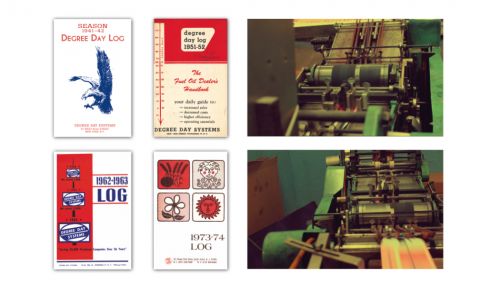All
Special K-Factor
by Aaron Cargas, Cargas Systems

Better delivery forecasting is what’s for breakfast
Are you eating runouts for breakfast, short deliveries for brunch, and partial fills for an afternoon snack? Do your employees think K-Factors and degree days are some sort of weather-based wizardry best left to bearded, robed, wand wielding types?
Don’t fret! It’s all just math, and it’s not the actual K-Factor calculations that are difficult, just the surrounding variables that make it mind bending.
In this article we will explore some of the best practices related to K-Factors and forecasting in today’s modern software applications, but first let’s examine the good old trusty K-Factor itself in a little more detail.
The easiest way to absorb the K-Factor calculation is to think of it in terms of something we all know: miles per gallon on a car. The K-Factor is basically the same calculation as MPG except instead of miles per gallon it’s degree days per gallon. Degree days, of course, are a measure of how cold it is over time.
In other words, the reason your 1979 Ford F-150 with Monster Mudder tires gets only 8 MPG is the same reason that big old drafty house that you keep at 85 degrees has a low K-Factor. That house burns a gallon of fuel in a very low number of degree days, just like your monster truck burns a gallon of fuel in a very low number of miles.
With that out of the way, let’s examine some other variables that can make or break your delivery forecasting:
The Reason for the Seasons – If you think customers’ K-Factors don’t fluctuate throughout the year, you would be wrong. A car has a range of MPG for city and highway driving. Also, if you like to spend your summers doing burnout contests you can bet your MPG will be even lower. Similarly, sometimes homeowner’s usage patterns are different in different seasons. A system that allows seasonal K-Factors, and also allows you to adjust the season dates based on your geography, can be a great benefit. After all, spring in Bangor, Maine is not the same as spring in Annapolis, Maryland…except for last winter.
Hot Water – You can also get yourself in some hot water if you don’t have a good way to account for hot water usage. Since hot water usage is year round, some systems use a second degree day clock and fictitious “summer degree days” to account for it. I find the idea of summer degree days confusing because it muddies the idea of actual degree days being a measurement of how cold it is below 65 degrees. I prefer the baseload or gallons per day calculation. A seasonal K-Factor plus a seasonal baseload is a great way to account for year-round usage in a more logical manner and keep you out of hot water.
Pull! – That’s a skeet shooting reference and also a reference to doing delivery pulls, because in both skeet shooting and delivery pulls, you want to be as accurate as possible. Your system should allow you to fine tune your pulls by showing “what if” scenarios for pulling ahead and showing you more specific customer information to help you better prioritize when you are running behind. Better delivery pull functionality means more accuracy and better total delivery optimization.
Adjusting to the Real World – Many systems will also automatically adjust the K-Factor and baseload by comparing the projected delivery to the actual. This is usually done within limits so that a single anomaly doesn’t throw someone way off, but it’s a great way to keep the forecasting in tune. Everyone needs a little reality check now and then.
The Exception to the Rule – As many people have pointed out, K-Factor systems are not perfect. That’s why it’s critical to have a good exception-based reporting mechanism to allow you to review customers who, for one reason or another, are way off from what the system predicted. But remember, using your exception report is like brushing your teeth. For best results, do it regularly.
Big Brother – Lastly, there are those customers who despite your best efforts are just unpredictable, like the guy who likes to have random propane bonfire parties. You may never be able to predict his usage, and that’s where tank monitoring can be your friend. Tank monitoring is an investment, but if you target it for just the small percentage of your customers who have the most erratic usage, it can be a smart investment. Big brother is watching…in a good way.
Hopefully this helps. And remember, with some minor adjustments to your forecasting practices, you’ll soon be eating a hearty breakfast of optimal drops with a side of great bottom line improvements. Yummy.
Related Posts
 100 Years of Helping Fuel Retailers Deliver!
100 Years of Helping Fuel Retailers Deliver!
Posted on August 18, 2025
 U.S. Competing to Secure Critical Minerals
U.S. Competing to Secure Critical Minerals
Posted on June 16, 2025
 The Clean Air Act, the EPA, and State Regulations
The Clean Air Act, the EPA, and State Regulations
Posted on May 14, 2025
 Day Tanks Support Back-up Generators in Extreme Conditions
Day Tanks Support Back-up Generators in Extreme Conditions
Posted on March 10, 2025
Enter your email to receive important news and article updates.
